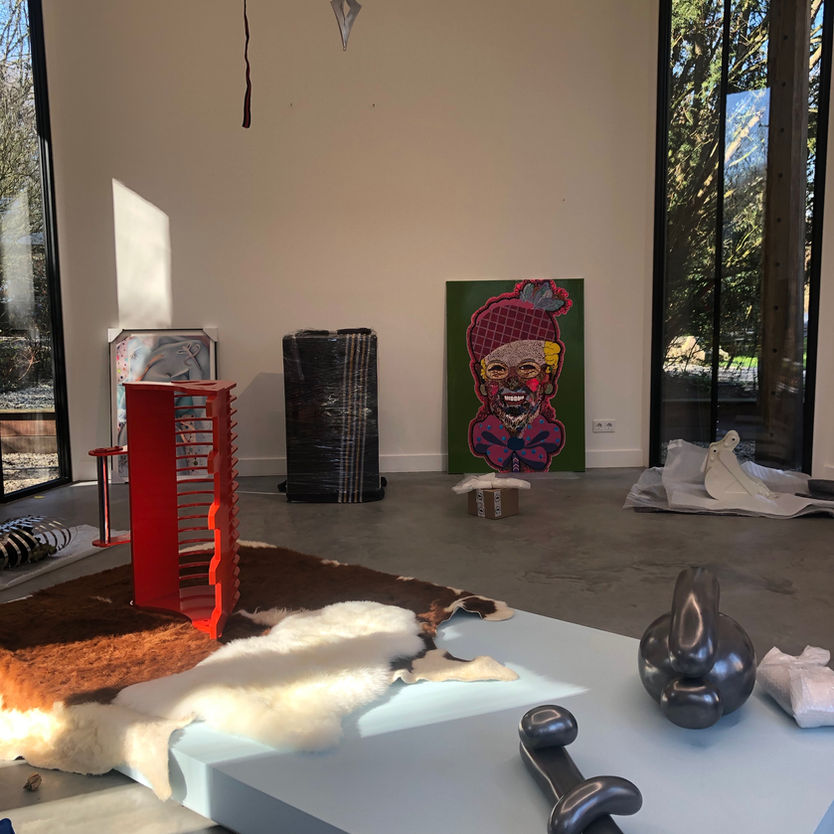Male Contrapositions (Houston, We Have a Man!)
Franciscus&Franciscus, Peter Hoijmakers, Hans Hovy,
Tom Puman and Koes Staassen
March 5 - June 4, 2023
In 1908, Swiss politician and essayist William Vogt wrote the book "Sexe faible" ("The Weak Sex"), in which he examines the "natural weaknesses and shortcomings of the female sex. Intended as a backlash against feminist utopian ideas of the time, the book gave words to then-dominant views of what it meant to be female and male. On the gender variation m/f we have organized Western modern society. Man represents breadwinner, tough and rational, and woman represents giving birth, caring and emotional.
For decades, woman was positioned as inferior to man because of her perceived anatomical inferiority. Only recently has this image slowly begun to change; men are not found to be the strong sex but rather statistically much more susceptible to serious diseases, much more likely to have difficulty keeping up in society, and men have a higher proportion of crime and suicides than women. In addition, the position of men is being actively questioned; they must take up less space, make room for the other.
There is talk of the "crisis of masculinity" in which the man no longer knows his place in society. The man also suffers from stereotyped expectations that still have not been dismantled. Indeed, internalized ideas of how you should be a man can also cut you off from actual needs such as self-expression and experiencing connection, for example, there is still the stereotypical image that the man is not allowed or cannot express his feelings. Maintaining this structure encourages toxic masculinity, creates dissatisfaction and insecurity for everyone. There is a tremendous opportunity to redefine the complexities of masculinity. Man, like woman, is contradictory, complex and layered.
Where society lags somewhat behind, art has long been exploring and complicating the image of the man and masculinity.
A good example is Bas Jan Ader's 1971 work where a photograph of the crying artist, among other things, became a postcard and sent to friends with the text, "I'm too Sad to tell you.
This exhibition, Male Contrapositions (Houston...We Have a Man!) attempts to help shape the male narrative within the human scale. Each artist has a distinct atmosphere and departs from a different perspective to position their work within the realm of visual art.
Franciscus&Franciscus, Peter Hoijmakers, Hans Hovy, Tom Putman and Koes Staassen thank you for the contribution of your beautiful work.
The photographs by artist duo Franciscus&Franciscus have a surreal atmosphere in them that refers to both 15th century portrait painting and the latest AI generated images.
Peter Hoijmakers attempts to combine physical, painterly and psychological realities, hoping to achieve transformations in the viewer's mind.
Tom Putman sculptures look like products coming out of the automation of industrialization processes, but nothing could be further from the truth. Sculptures with enigmatic combinations of symbols that evoke a "new" nostalgia.
Koes Staassen is a highly refined draughtsman. His gentle approach to a highly personal relationship to desire creates dreamy drawings in which bodies are fixed in a loving bondage. The drawings show an eye-opening sensual play in which it is never quite clear what the ribbons, pearls and other objects are to be used for.
Hans Hovy creates sculptures where the forms like a scene on a platform involve the viewer in a playful, light-hearted sensual game. Again and again, the sculptures take you into voyeuristic situations.























